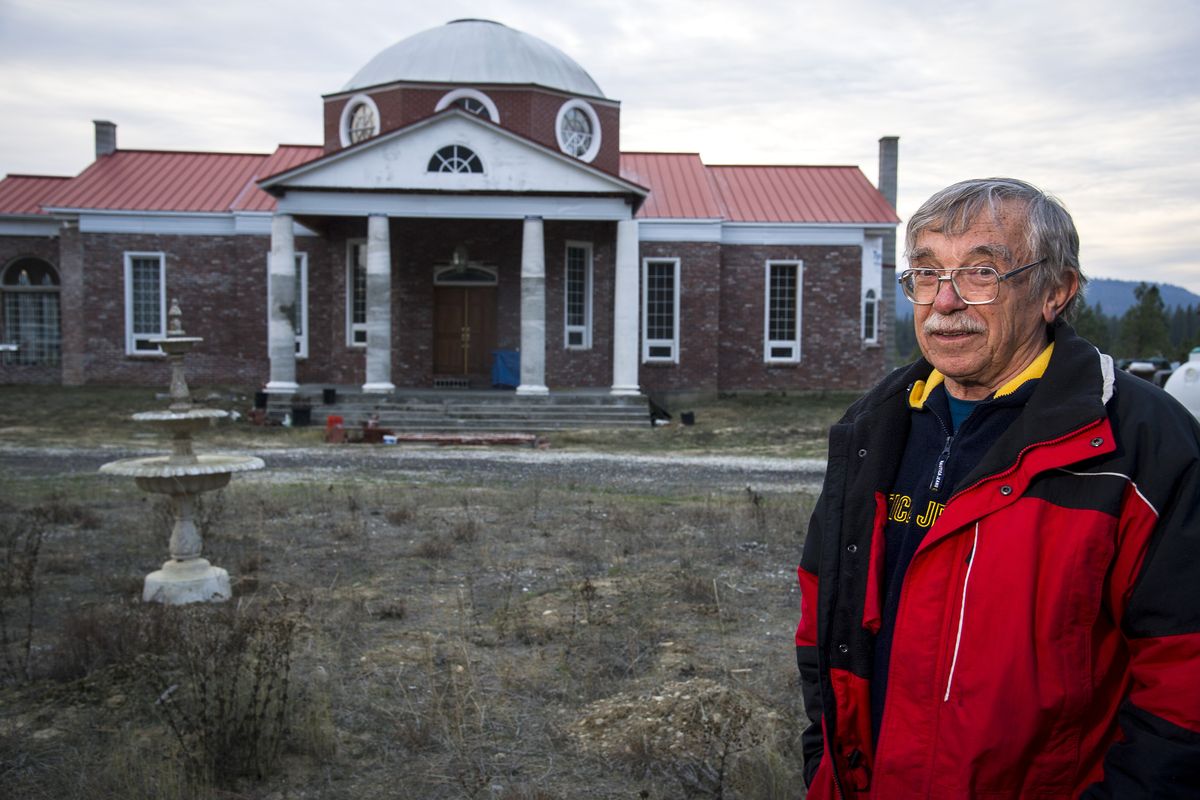This column reflects the opinion of the writer. Learn about the differences between a news story and an opinion column.
Shawn Vestal: Author, historian building replica of Thomas Jefferson’s Monticello

Dan Sisson grew up about an hour away from Monticello, Thomas Jefferson’s famous plantation home near Charlottesville, Virginia.
“We used to go and have the whole place to ourselves, just wandering, and I fell in love with it,” Sisson said.
That love endured. Sisson – a historian, author and longtime Eastern Washington University professor – has spent more than 12 years working on what he calls “Monticello West,” his home in rural Stevens County that is very nearly a replica of Monticello East. He is building it using salvage materials, a lot of hard work, a bit of hired help, and an incredible series of perfectly timed breaks that he refers to as “some kind of magic.”
“Everything here is 85 percent or 75 percent finished,” Sisson said earlier this week, waving his hand at the partially finished brick walkway in front.
Sisson’s fascination with Jefferson and American history also drew him to the subject of a book he wrote 40 years ago, “The American Revolution of 1800.” When the book was first published, it seemed poised to make a big splash, before a few unfortunate turns pretty much left it “dead,” he said. But the book was brought back to life this year; it has been republished and Sisson is talking about it regularly on an international radio show. He’s giving a reading from the book Saturday at Auntie’s Bookstore.
Sisson’s book focuses on the bitterly fought election of 1800 between Jefferson – representing the group that favored greater state authority and a weaker central government – and John Adams, a federalist favoring strong central government and wary of popular majorities. Jefferson won, and Sisson considers the victory crucial in the American project – a second revolution, which asserted the rights of individuals and freedom over the authority of small, centralized factions of power.
The book echoes many themes that are relevant to today’s divided, gridlocked political atmosphere, with political parties and special interests essentially operating a system that does not serve the interests of most citizens. The progressive radio and TV host Thom Hartmann saw a similar parallel when reading the book, and that’s what prompted him to have the book republished and to air conversations with Sisson regularly.
Sisson argues against the conventional wisdom that the two-party system, and periods of resulting intractable conflict, are expressions of the system working as intended. Instead, he says, Jefferson and other founders expressed a deep distrust of parties and considered all such self-interested “factions” as potential instruments of despotism against the liberty and well-being of the general populace.
“The violence that flows from factions is what tears countries apart,” he said. “What we’re witnessing now, I believe, is the breakdown of the system.”
Sisson wrote the book as his doctoral dissertation from Claremont Graduate University, and it was published by Knopf in 1974. In the years after the book was published and faded away, he did a variety of things, including 14 years writing for Field and Stream magazine and teaching all over the place. He never lost his love for Monticello, though, and would revisit it periodically. He was once scolded and chased off for taking measurements inside the home, he said.
He also formed the idea that he’d like to build a replica, or at least a house inspired by Monticello, long before he ever laid eyes on the piece of land he now owns outside Ford.
In the early 1990s he was working as the manager of a Forest Service recreation area near Bend, Oregon. Bend is also the home of Pozzi Window Co., and employees from the company who would have lunch at the recreation area learned about his dream of replicating Monticello. Before long, he’d been offered his pick of the Pozzi “boneyard” at $50 a window – an incredible buy. Not long after, he stumbled across the chance to buy a pickup truck load full of marble tile for $300.
“At that point,” Sisson said cheerfully, “you can’t turn back.”
He scouted around for the right spot. As he zeroed in on Eastern Washington, he was surprised to find as he went around to planning officials that his notion of using salvaged and reclaimed materials – which is now so popular – was met with resistance. He couldn’t get permitted, until he went into the office of the Stevens County planning department, and unfurled his plans before the director.
“He looks up and says, ‘Dan, I’m going to help you build this house,’ ” Sisson said.
Sisson bought his land south of Ford, a beautiful spot between state land and the Spokane Indian Reservation. He hired help for some of the work, and learned to do some of it himself. He found truckloads of lumber for 5 cents on the dollar. He picked up salvage from demolition projects. He was given 63,000 free bricks from the owner of an antique business in Spokane, which he hauled home “250 bricks at a time for years.”
When it came time to build the dome, he went out and got a bid: $55,000. But then the magic kicked in. A local doctor with wide-ranging interests got wind of what Sisson was doing and offered to build the dome for him in his garage. It took one winter and cost $1,650.
These days, Sisson is enjoying the return of his book, and his regular appearances on Hartmann’s show to discuss politics and history. And he’s also working on the house – many of the inside rooms are unfinished and there’s more brickwork to do on the outside.
“Jefferson took 43 years to finish his house,” Sisson said. “I’m never going to be done.”
